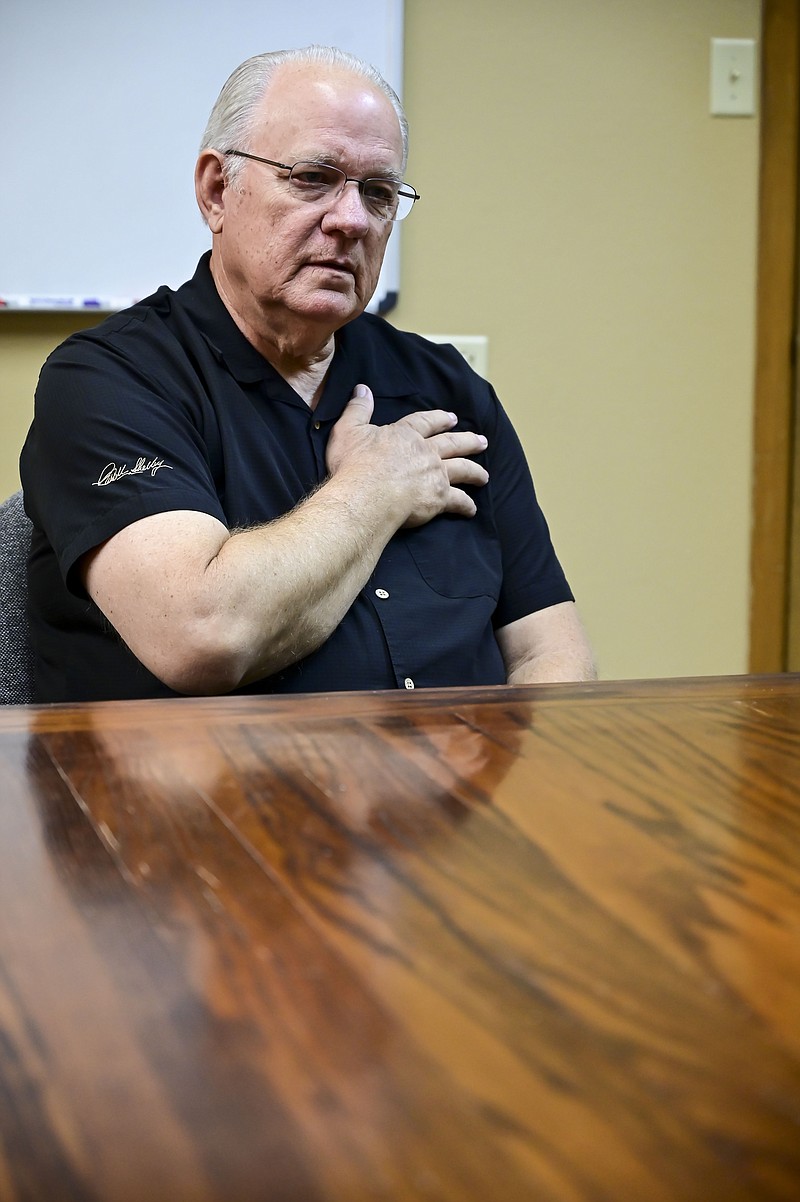TEXARKANA, Ark. - Richard Posey made a deal with his wife: He would go to the doctor as soon as she stopped hounding him to.
It was 2012, and something strange about his left breast had caught his attention.
"I noticed a difference in the nipple; it was inverted. And my wife looked at it, and she said, 'You need to have that checked.' And I said, 'Nah, I'm getting old. Stuff like that happens,'" said Posey, 66, an Arkansas-side native and associate pastor at Beech Street Baptist Church.
When Posey finally acquiesced and saw a doctor, a mammogram - "I call them daddygrams," he said - and then a needle biopsy confirmed the couple's fears. It was a malignant tumor. He had breast cancer.
The American Cancer Society estimates that out of 271,270 new cases of breast cancer expected in 2019, 2,670, or just under 1%, will be in men. And of an estimated 42,260 deaths to be caused by breast cancer this year, 500, or about 1.2%, will be among men.
Boys and girls have very similar breast anatomy until puberty, when girls' ovaries begin to produce hormones that cause their breasts to grow and become functional, according to the ACS website, cancer.org. As is possible with any cells in the body, men's small amount of breast tissue, "consisting of a few ducts located under the nipple and areola (area around the nipple)," can become cancerous, though it is rare.
Possible symptoms of breast cancer to watch for include a lump or swelling, which is often but not always painless; skin dimpling or puckering; nipple retraction, turning inward; redness or scaling of the nipple or breast skin; and discharge from the nipple.
"Sometimes a breast cancer can spread to lymph nodes under the arm or around the collar bone and cause a lump or swelling there, even before the original tumor in the breast is large enough to be felt," the website states.
As with all cancers, early detection of breast cancer in men is important to successful treatment, and Posey's case is a good example.
After a mastectomy, he had 12 weeks of chemotherapy. Because he tested positive for a genetic mutation called BRCA2 associated with increased risk of breast cancer, he then had a preventive mastectomy on his right side, as well. That was followed by five years of taking the drug tamoxifen, a common option for breast cancer patients.
His faith and the support of his church community were also important in his treatment, he said. Today he is cancer-free.
Posey's message to other men is simple: Pay attention to your body and don't let any uncomfortable emotions get in the way of good health.
"Don't be embarrassed about it. Don't be ashamed," he said. "If they feel like they need to have it checked out, have it checked out, because most men that die from breast cancer die due to neglect."

